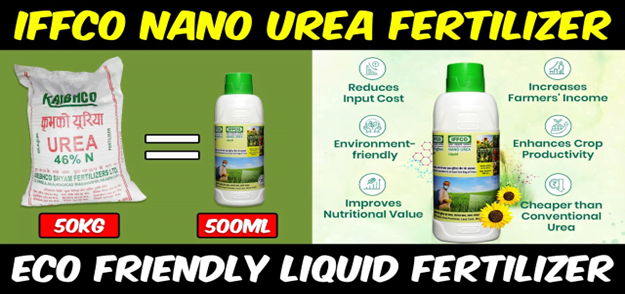Governance
In news: Despite being fast tracked for commercial application, nano-urea has yet to be fully tested. Nano-urea approval was granted in February 2021.
- Nano-urea is developed by the Indian Farmers and Fertiliser Cooperative (IFFCO) a multi-state cooperative society (based in New Delhi) and promoted by the government as a panacea to reduce farmer reliance on packaged urea.

Advantages over conventional urea:
- In the field trials, it was claimed that a single half-litre bottle of the liquid (~ Rs 240 and is good for an acre of crop) can compensate for a 45 kg sack of urea granules (costs around ₹3,000 though it is made available to the farmer at ₹242).
- Apart from significantly enhancing farmers’ income by lowering input and storage costs, nano urea liquid promises to increase agricultural yield and productivity.
- Nano urea liquid also promises to give a long-term solution for plant nutrition by increasing crop nutrient efficiency while lowering soil, water, and air pollution.
- It is very efficient to use because there is no wastage in application of Nano urea. Therefore, its efficacy is more than 80 per cent , whereas the conventional urea efficacy is only 30 per cent to 40 percent.
- According to the Union Ministry of Chemicals and Fertilisers, by 2025, India’s domestic urea production (conventional + nano-urea) would mean India would be self-sufficient in the manufacture of urea. This means, India would no longer require the 90 lakh tons that it imported every year and would save the country close to ₹40,000 crore.
Concerns expressed by agronomists about the new technology:
Claim of IFFCO is unfounded:
- Urea is highly water soluble and already reaches the lowest form of concentration when absorbed.
- It is uncertain how nanoparticles can improve nitrogen uptake efficiency by being even smaller.
- Moreover, scientists are still unclear if the product can on its own cut farmers’ dependence on urea.
Conventional urea cannot be omitted:
- As per the standard practice, when sowing crops such as wheat, rice, mustard, at least two 45-kg sacks of urea is used.
- The first is applied during the early sowing or transplantation stage of the crop.
- The second stage application is done when the plant has sprouted a canopy of leaves.
- This means that traditional packaged urea is still required throughout the initial stage of crop development as basal nitrogen.
- According to the findings, 50% of the top-dressed urea (second stage treatment) could be substituted but not basal nitrogen.
Source: The Hindu











